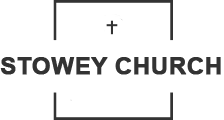• Painted by Henry Strachey (1863-1940), youngest son of Lord Strachey of Sutton Court, Stowey.
• Henry Strachey was a successful artist of landscapes, portraits and murals, exhibiting at The Royal Academy of Arts, The New English Art Club and elsewhere.
• The Chancel Arch mural, completed 1900, depicts the Last Judgement.
• The Chancel murals, completed 1915, depict three scenes from the New Testament: The Women at the Tomb, The Supper at Emmaus and the Feeding of the Five Thousand.
• The East Wall murals depict the patronal saints, St Nicholas and St Mary
• Local villagers and members of the Strachey family were used as models.
• The Italian style incorporates elements reminiscent of the local Mendip landscape.
Henry Strachey (1863-1940) was a successful artist of landscapes, portraits and murals, exhibiting at The Royal Academy of Arts, The New English Art Club and elsewhere. Many of his paintings reflect his deep love for the Somerset countryside, and record disappearing agricultural practices. He painted murals for both public bodies and private organisations. He was a Raphael expert and an art and music critic for The Spectator. He was a highly respected Scouter too, and an accomplished musician.
Henry Strachey was an older cousin to Duncan Grant and Lytton Strachey who, with other Strachey cousins, were members of the Bloomsbury group. He and Duncan Grant spent time together in Rome and Grant visited Somerset while Strachey was working on the Stowey Murals. It is possible that these murals may have provided some inspiration for the Bloomsbury Murals at St Michael and All Angels, Berwick, East Sussex, executed by Duncan Grant and Vanessa Bell.
The chancel arch mural, completed in 1900, depicts the Last Judgement. This mural, on canvas panels using oil, tempera and gold leaf, depicts The Last Judgment and covers the chancel arch. An unusually positive representation, all the figures appear to be on the point of redemption, and there is no depiction of Purgatory or Hell. Charged with power and pathos, this space is filled with the rising movement of angels leading spiritual bodies towards St Michael as the Angel of Death. The angels, unusually, are both male and female guiding ‘spiritual bodies’; the garment styles are Renaissance and late Victorian. Villagers were used as models.
The chancel murals, completed in 1915, on canvas panels using oil, tempera and gold leaf, depict three scenes from New Testament accounts:
North wall
Two Resurrection scenes use the entire north wall of the chancel. Read from east to west, the two scenes set at dawn and sunset follow the progression of daily liturgies that take place in the chancel.
The women at the tomb
In the foreground, three women in flowing cloaks look towards the distant tomb, still in darkness, and set against a background of a typically Mediterranean landscape of hill, rock and cypress trees silhouetted against the light of the early dawn sky.
The Supper at Emmaus
A blue-grey hillside in the distance and the glow of sunset are the backdrop to the three figures: Christ, a man and a woman at a supper table set in the garden of a white-walled, terracotta roofed villa. Christ holds out a portion of bread to the man, probably Cleophas; the held gaze between the two of them records the moment of recognition, closely observed by the woman.
Henry Strachey exhibited a ‘Design for Decoration of North Wall of Chancel, Stowey Church, Somerset’ at the Royal Academy in 1923.
South wall
The entire south wall depicts the Feeding the Five Thousand. The central figure of Christ dominates the foreground, as He holds up a loaf of bread in both hands, reminding us of the act of Eucharistic consecration which takes place here in the chancel. Disciples distribute food amongst the assembled groups of people. The rural landscape with distant purple-grey hills, trees and clouds incorporates some distinctly Somerset features: hills reminiscent of the Mendips, mature trees, daisies in the grass, irises at a pond’s edge and water lilies in the pond, echoing the immediate landscape in which the church is sited.
East wall
St Nicholas and a boy
Two niches in the east wall, one either side of the communion table, depict the joint patronal dedication of the church, on painted canvas using oil and plaster. The niche on the north side depicts St Nicholas and a boy. The model for the boy is John Strachey, Henry’s nephew, son of his brother St Loe Strachey (Proprietor of The Spectator), who himself may have been the model for the face of St Nicholas.
The niche on the south side depicts St Mary and a girl, modelled by Frances, Henry Strachey’s sister, and her daughter, Mary.
These early 20th century murals have a place in British Art History, and urgently need restoration.

